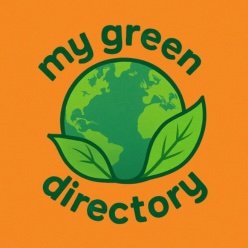As the urgency of the climate crisis grows, high-quality educational content is essential for empowering learners to understand and address climate change. Whether you’re an educator, content creator, or organization, developing engaging, accurate, and actionable climate education can inspire real-world impact.
This guide outlines best practices, strategies, and resources for creating effective, science-based, and audience-centered educational content on climate action.
🌱 Why Develop Educational Content on Climate Action?
- Raise Awareness
Educate diverse audiences about climate science, environmental issues, and sustainable solutions. - Empower Action
Equip learners with the knowledge and tools to take meaningful climate action in their communities. - Build Climate Literacy
Foster a deep understanding of the causes, consequences, and solutions to climate change. - Support Educators
Provide teachers with classroom-ready tools, lesson plans, and support networks.
🛠️ 7 Steps to Develop Educational Content on Climate Action
1️⃣ Define Your Audience and Goals
- Identify Your Audience
Consider age, location, education level, and prior knowledge. Examples:- K–12 students
- University students
- Community groups
- Businesses and NGOs
- Set Clear Learning Objectives
Determine what you want learners to know, feel, and do after the experience.
2️⃣ Base Content on Accurate, Up-to-Date Science
- Use Trusted Sources
Reference peer-reviewed research and reputable organizations like:- IPCC
- NOAA Climate.gov
- UNESCO
- NASA Climate
- Address Misconceptions
Clarify false beliefs about the natural vs. human causes of climate change.
3️⃣ Adopt an Interdisciplinary, Holistic Approach
- Combine Subjects
Integrate climate change into science, geography, social studies, economics, and arts. - Connect Local and Global
Show how local actions (e.g., recycling, urban gardening) connect to global solutions.
4️⃣ Design Engaging, Interactive Learning Experiences
- 🎥 Use Storytelling
Share personal stories, case studies, or indigenous knowledge. - 🔬 Include Hands-On Activities
Projects, citizen science, and school-based sustainability projects. - 💻 Leverage Digital Tools
Videos, simulations, quizzes, carbon footprint calculators.
5️⃣ Promote Action and Agency
- 🧠 Encourage Critical Thinking
Use data analysis and real-world problem-solving scenarios. - 📝 Offer Actionable Steps
Help learners develop climate action plans, from small habits to policy advocacy. - 👧 Support Youth Leadership
Guide students to lead school projects, eco-clubs, and climate campaigns.
6️⃣ Support Educators and Facilitators
- 🎓 Offer Professional Development
Webinars, workshops, and downloadable toolkits. - 📚 Create Adaptable Materials
Curriculum guides, templates, slide decks, and printable resources. - 🤝 Build Community
Connect educators through networks for sharing ideas and collaborating on projects.
7️⃣ Evaluate and Iterate
- 📊 Assess Outcomes
Use surveys, quizzes, and feedback to measure knowledge and engagement. - 🔁 Update Regularly
Adapt your content as science evolves and audience needs shift.
📋 Best Practices Summary Table
| Practice | Description |
|---|---|
| 🔬 Science-Based | Ground lessons in current, accurate climate science |
| 🎭 Interdisciplinary | Combine science, humanities, and arts |
| 🌍 Locally Relevant | Link climate change to students’ real lives and communities |
| 🧩 Interactive Learning | Use experiments, games, and tech tools for deeper engagement |
| 🧭 Action-Oriented | Empower learners to take practical, visible steps |
| 👩🏫 Educator Support | Provide ready-to-use resources and training for facilitators |
🧪 Example: Climate Action Content in Practice
🌿 Living Labs
Schools become eco-hubs, involving students in real sustainability practices—gardening, composting, energy-saving projects.
🧠 STEM Integration
Climate topics are embedded in STEM subjects through hackathons, robotics, and clean energy experiments.
🙋 Youth Leadership
Students lead initiatives like school climate summits or participate in policy advocacy with teacher support.
🌟 Conclusion
Developing powerful climate action education content requires a blend of scientific accuracy, creative delivery, and a focus on real-world impact. By grounding your resources in trusted science, connecting them to everyday life, and equipping both learners and educators, you help build a generation of empowered changemakers ready to confront the climate crisis.
🔍 Sources and References
- Columbia University – New Findings on Climate Education
- UNESCO: Climate Change Education
- NOAA Climate.gov – Teaching Toolbox
- Education for Climate – Green Education Actions 2025
- NAAEE – Designing Effective Climate Change Education
- Teach for All – Climate Education and Leadership
⚠️ Disclaimer
This article is intended for informational and educational purposes only and does not constitute professional, legal, or scientific advice. All efforts have been made to ensure the accuracy of the information, but readers are advised to consult relevant experts, educational professionals, or organizations for specific guidance tailored to their needs.

Comments